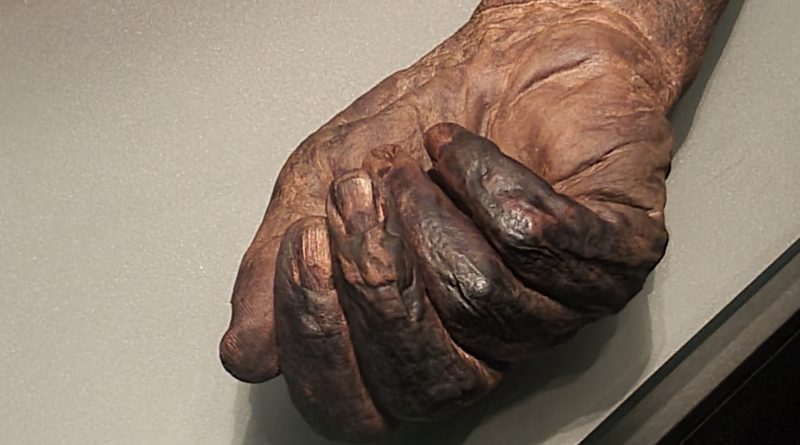Dublin – National Museum of Ireland (Bog Bodies)
Firstly, I did wonder whether it was appropriate to take and upload photos of dead bodies, but I noticed that the museum themselves did extensively, with no shortage of other imagery available on-line.
There are four different bog bodies on display at the National Museum of Ireland, perhaps not really being displayed with a great amount of dignity. Three of those bodies are below, preserved because the conditions in the bog effectively mummified them. There are around 100 bodies of this type which have been found around the world, some of whom are Soviet soldiers from the Second World War.
This is Gallagh Man who was discovered in 1821 when peat cutting and his body dates to around 200 and 400 BC.
This is Clonycavan Man who was only discovered in 2003, when a peat harvesting machine was being used. This poor man hasn’t had an ideal time of it, as it’s thought that he was murdered, perhaps as part of a sacrifice. Although historians often use the reason of sacrifice, when it was maybe just as likely there was some sort of dispute. Anyway, the body dates to between 200 and 400 BC.
This is the Baronstown West Man who was discovered in 1953 when workmen were peat cutting. He lived in the early Iron Age between around 200 to 400 AD and he was aged between around 25 and 30.
There’s plenty of information in the museum’s exhibition about the individuals, as well as reconstructions of what they looked like which does bring them to life somewhat from the rather exposed state that they are currently lying in. The preservation is though quite incredible, allowing archaeologists to get a deep understanding of the bodies, not least because the internal organs have mostly survived to some degree. It’s clear from reviews that the bog bodies are what most visitors consider to be the most intriguing part of the museum.
There’s more information about the bog bodies at https://www.museum.ie/en-IE/Collections-Research/Irish-Antiquities-Division-Collections/Collections-List-(1)/Iron-Age/Bog-Bodies-Research-Project.










